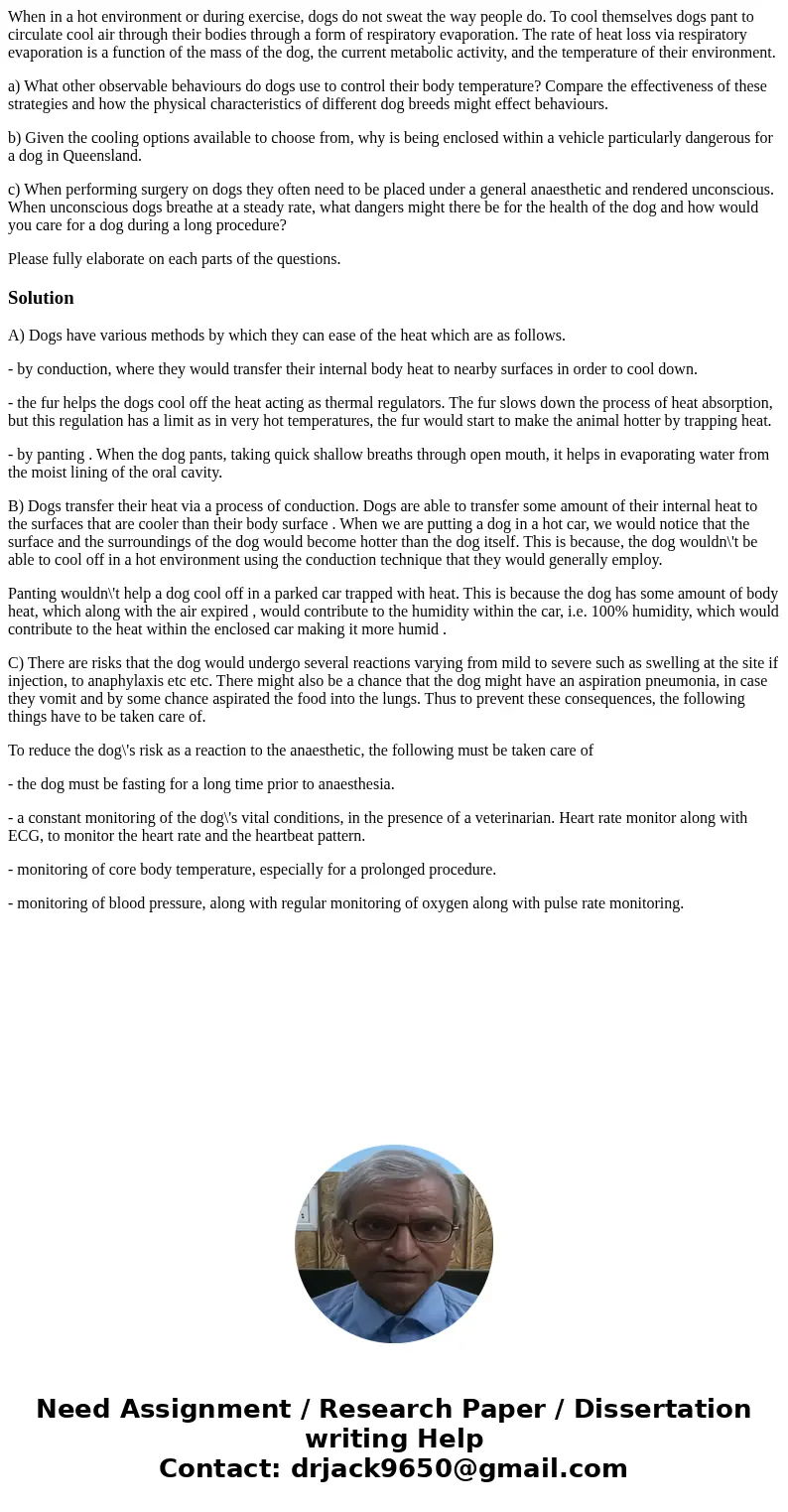When in a hot environment or during exercise dogs do not swe
When in a hot environment or during exercise, dogs do not sweat the way people do. To cool themselves dogs pant to circulate cool air through their bodies through a form of respiratory evaporation. The rate of heat loss via respiratory evaporation is a function of the mass of the dog, the current metabolic activity, and the temperature of their environment.
a) What other observable behaviours do dogs use to control their body temperature? Compare the effectiveness of these strategies and how the physical characteristics of different dog breeds might effect behaviours.
b) Given the cooling options available to choose from, why is being enclosed within a vehicle particularly dangerous for a dog in Queensland.
c) When performing surgery on dogs they often need to be placed under a general anaesthetic and rendered unconscious. When unconscious dogs breathe at a steady rate, what dangers might there be for the health of the dog and how would you care for a dog during a long procedure?
Please fully elaborate on each parts of the questions.
Solution
A) Dogs have various methods by which they can ease of the heat which are as follows.
- by conduction, where they would transfer their internal body heat to nearby surfaces in order to cool down.
- the fur helps the dogs cool off the heat acting as thermal regulators. The fur slows down the process of heat absorption, but this regulation has a limit as in very hot temperatures, the fur would start to make the animal hotter by trapping heat.
- by panting . When the dog pants, taking quick shallow breaths through open mouth, it helps in evaporating water from the moist lining of the oral cavity.
B) Dogs transfer their heat via a process of conduction. Dogs are able to transfer some amount of their internal heat to the surfaces that are cooler than their body surface . When we are putting a dog in a hot car, we would notice that the surface and the surroundings of the dog would become hotter than the dog itself. This is because, the dog wouldn\'t be able to cool off in a hot environment using the conduction technique that they would generally employ.
Panting wouldn\'t help a dog cool off in a parked car trapped with heat. This is because the dog has some amount of body heat, which along with the air expired , would contribute to the humidity within the car, i.e. 100% humidity, which would contribute to the heat within the enclosed car making it more humid .
C) There are risks that the dog would undergo several reactions varying from mild to severe such as swelling at the site if injection, to anaphylaxis etc etc. There might also be a chance that the dog might have an aspiration pneumonia, in case they vomit and by some chance aspirated the food into the lungs. Thus to prevent these consequences, the following things have to be taken care of.
To reduce the dog\'s risk as a reaction to the anaesthetic, the following must be taken care of
- the dog must be fasting for a long time prior to anaesthesia.
- a constant monitoring of the dog\'s vital conditions, in the presence of a veterinarian. Heart rate monitor along with ECG, to monitor the heart rate and the heartbeat pattern.
- monitoring of core body temperature, especially for a prolonged procedure.
- monitoring of blood pressure, along with regular monitoring of oxygen along with pulse rate monitoring.

 Homework Sourse
Homework Sourse